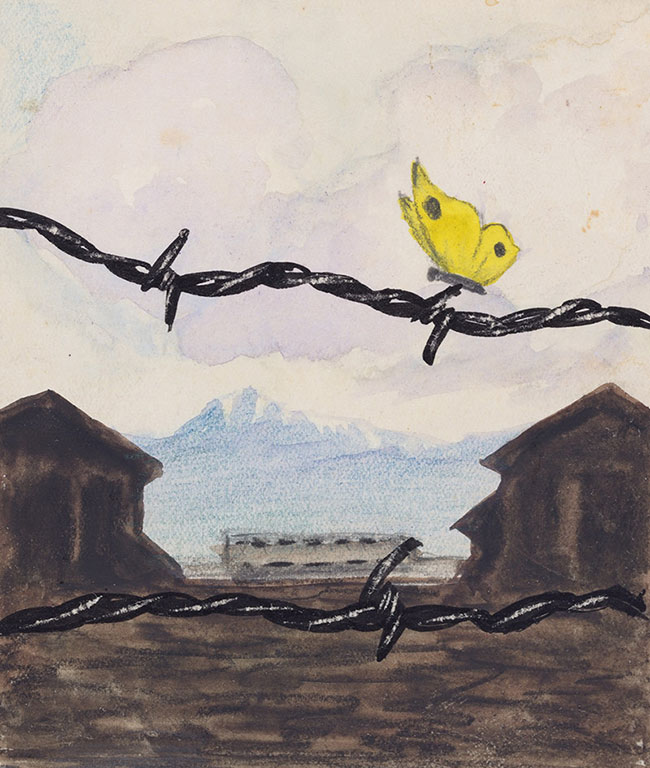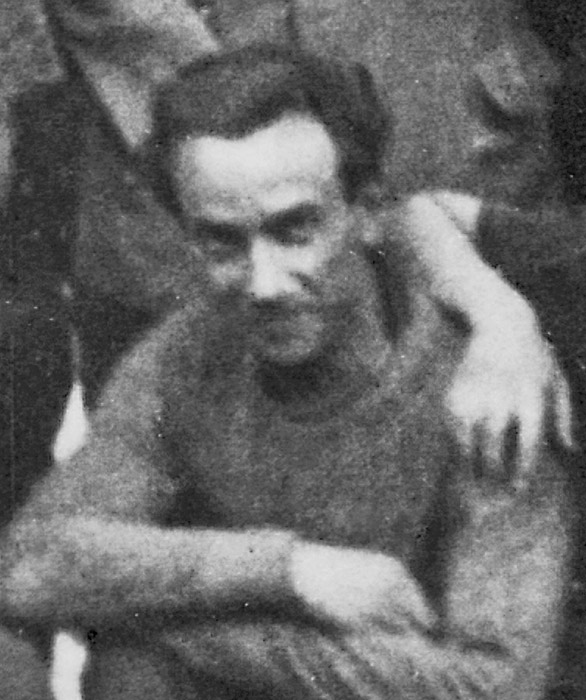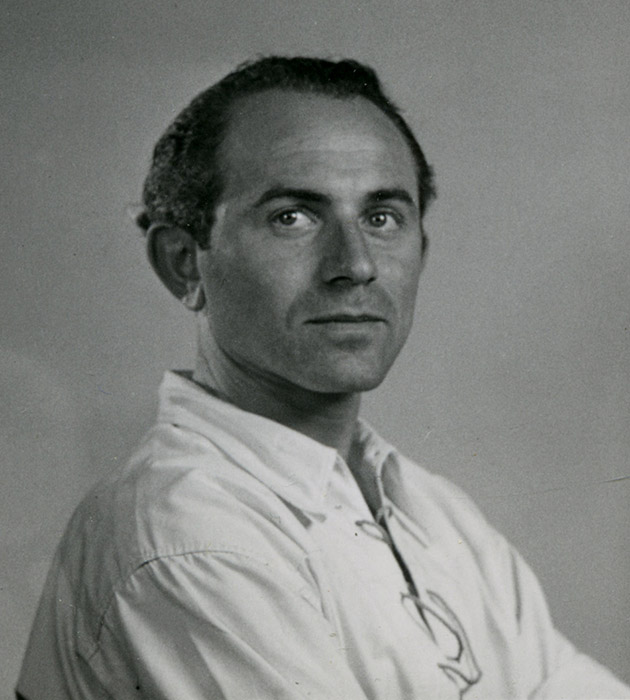
Watercolor, India ink, and pencil on paper
14.4 x 10.3 cm
Collection of the Yad Vashem Art Museum, Jerusalem
Gift of Annelies Haymann, Kiryat Bialik, Israel
Bodek and Löw often collaborated, signing many of their works jointly. Together they prepared stage settings for the cabaret at the Gurs camp and drew posters and cards for various occasions.

Raised in a traditional Jewish family, Karl Robert Bodek worked as a photographer and draftsman. In June 1940, following the Soviet occupation of Northern Bukovina, he fled first to France and then to Belgium in search of refuge. That October he was arrested and transported from Belgium to the Saint Cyprien camp and then to the Gurs camp, both in southern France. Bodek drew "stamps" protesting the inhuman conditions in the camp. In April 1941 he was transported to Camp Les Milles, near Aix-en-Provence, where he taught painting, drew portraits of fellow prisoners, and worked on the murals still extant on site. Bodek's attempts to be released failed; in August 1942 he was transported to the Drancy camp, and then to Auschwitz, where he was murdered.

While studying at the Vienna Academy of Fine Arts, Kurt Conrad Löw was already working as a textile designer. In 1938 he was imprisoned for a short time due to his socialist activities. In 1939 he fled to Belgium, where he continued his academic training in Antwerp. In 1940 Löw was arrested and transported to the Saint Cyprien camp and the Gurs camp in southern France. With the assistance of the International Red Cross in Geneva, he was transferred to Camp de Rivesaltes and released in 1942. Between 1943 and 1945 Löw studied art in Geneva and participated in numerous exhibitions. In 1952 he returned to Vienna, where he remained active as an artist.